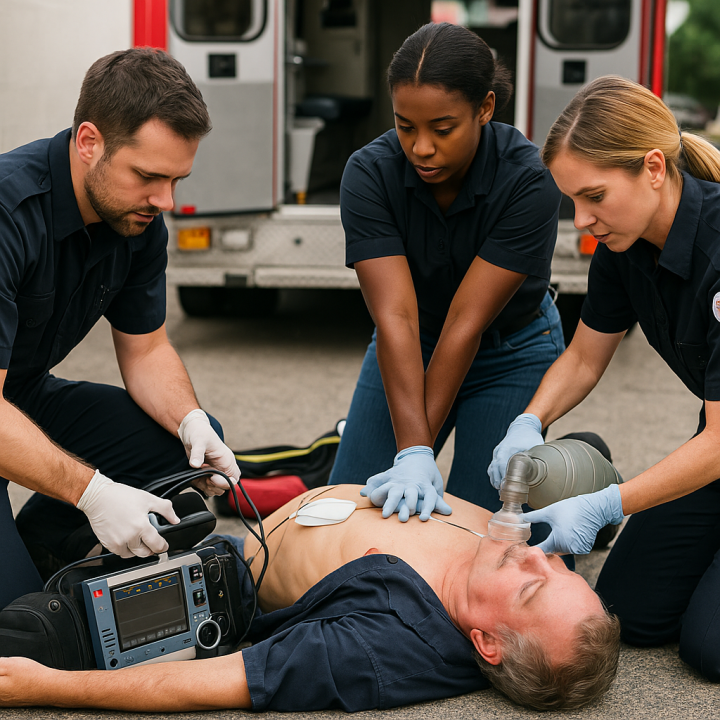When every second counts, paramedics are the frontline heroes who bring ACLS (Advanced Cardiovascular Life Support) to life—right in the patient’s driveway, living room, or office lobby. Understanding how ACLS is applied in the field helps us appreciate the speed, precision, and teamwork needed for critical outcomes.
🚑 1. Scene Safety and Rapid Assessment
Before anything else, paramedics ensure the scene is safe—for themselves, their team, and the patient. Then they immediately begin:
- Checking responsiveness
- Assessing pulse and breathing
- Activating full ACLS if the patient is pulseless or unresponsive
⚡ 2. High-Quality CPR Starts Immediately
If the patient is in cardiac arrest, CPR is initiated right away. Paramedics prioritize:
- Hard, fast chest compressions (100–120/min)
- Minimal interruptions
- Two-person rotations to avoid fatigue
An automated external defibrillator (AED) or manual defibrillator is brought in swiftly for rhythm checks.
🧠 3. Rhythm Recognition in Seconds
Paramedics analyze the ECG rhythm as quickly as possible to determine if the patient is in:
- Ventricular fibrillation (VF)
- Pulseless ventricular tachycardia (VT)
- Asystole
- Pulseless electrical activity (PEA)
Their treatment decisions hinge on immediate rhythm recognition.
💉 4. Medication Administration on the Move
While CPR continues, one team member establishes IV or IO access. Medications like:
- Epinephrine
- Amiodarone
- Lidocaine
…are given based on the rhythm and timing of the resuscitation algorithm.
🔄 5. Team Roles and Communication
ACLS on scene works only if team roles are clear:
- One person gives compressions
- One manages the airway
- One delivers medications and tracks time
- One communicates with the hospital or medical control
Every paramedic must communicate clearly and anticipate what’s needed next.
🏥 6. Transport Decision-Making
If return of spontaneous circulation (ROSC) is achieved, the patient is quickly prepped for transport with:
- Oxygen support
- 12-lead ECG
- Continued monitoring and care en route
If not, CPR may continue through transport, especially if further interventions like PCI or ECMO are accessible.
Final Thoughts
Paramedics don’t just follow ACLS—they execute it under pressure with limited resources, chaotic settings, and high stakes. Their ability to apply these protocols confidently and systematically saves lives every day.


